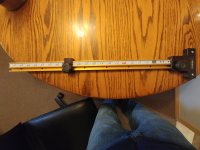Bugsysiegals
Member
- Joined
- Mar 19, 2016
- Messages
- 908
Happy Holidays Everybody,
I've finally some Holiday vacation time and thought I'd take the time to share how I've modified my Incra parallel guides.
To begin with, I did this mod because it's always bothered me to get both parallel guide end stops set to the exact same measure. Besides this, as I rip multiple panels for a project, I always wonder if any little errors will compound into bigger errors by the end of a project. I have the Incra Precision Joinery fence on my SawStop and wished these PG's had the same capability ... rather than waiting for somebody to create them I decided I'd do it myself ...
To begin with, I ordered Low-Strength Steel Threaded Rod, M6 x 1 mm Thread Size, 1 M Long which fits the Incra t-track perfectly.
I then used Fusion 360 to design t-track brackets the threaded rod could screw into in order to hold it in place both vertically and horizontally. The brackets are "U" shaped and hold the bottom half of the lead screw. And in order to stop them from moving horizontally, I created a vertical hole which allows a pin to be inserted which locks it into position using the hole at the bottom of the t-track.
View attachment 1 View attachment 2 View attachment 3 View attachment 4 View attachment 8
Finally, I designed the end stops which are two "U" shaped brackets. The top piece is designed to hold a small piece of the M6 threaded rod and the bottom has a recessed hole for springs and screw to allow these to be spring loaded end stops.
View attachment 5 View attachment 6 View attachment 7
I've replaced the stock Incra measuring tape with Starrett measuring tape. It was difficult to insert and is not movable horizontally now that it's inserted. Since I cannot move the measuring tape, in order to calibrate, rather than pushing the t-track into the Seneca adapter until it bottoms out, I place my end stop at 52mm (based on where my measuring tape is positioned), slide the t-track into the Seneca adapter, and tighten it down. This leaves a ~1mm gap between the end of the t-track and Seneca adapter and I make micro adjustments by turning the lead screw on the end stop which affects how deep the t-track seats into the Seneca adapter which allows calibration of cutting width.
Here's the lead screw almost flush with the end stop...
View attachment 12 View attachment 11 View attachment 13
Here's the lead screw protruding past the end stop...
View attachment 14 View attachment 15 View attachment 16
I no longer have to wonder if both end stops are set the same or spend time comparing the two wondering if my eye is in the right position to reduce parallax. I simply lift up on the top section of the end stop, slide it to the measure, and release the end stop which takes a few seconds compared to 10's of seconds if not a minute when I was comparing the two back and forth to ensure they're the same. In addition to how quick these are, and not worrying about the accuracy, the fact the screws always mate the same way every time allows me to come back and rip a panel after the fact to the exact same width of a previous panel just like my Incra Precision Joinery fence on the TS which is a game changer for me so I figured I'd share...
View attachment 9 View attachment 10
I've finally some Holiday vacation time and thought I'd take the time to share how I've modified my Incra parallel guides.
To begin with, I did this mod because it's always bothered me to get both parallel guide end stops set to the exact same measure. Besides this, as I rip multiple panels for a project, I always wonder if any little errors will compound into bigger errors by the end of a project. I have the Incra Precision Joinery fence on my SawStop and wished these PG's had the same capability ... rather than waiting for somebody to create them I decided I'd do it myself ...
To begin with, I ordered Low-Strength Steel Threaded Rod, M6 x 1 mm Thread Size, 1 M Long which fits the Incra t-track perfectly.
I then used Fusion 360 to design t-track brackets the threaded rod could screw into in order to hold it in place both vertically and horizontally. The brackets are "U" shaped and hold the bottom half of the lead screw. And in order to stop them from moving horizontally, I created a vertical hole which allows a pin to be inserted which locks it into position using the hole at the bottom of the t-track.
View attachment 1 View attachment 2 View attachment 3 View attachment 4 View attachment 8
Finally, I designed the end stops which are two "U" shaped brackets. The top piece is designed to hold a small piece of the M6 threaded rod and the bottom has a recessed hole for springs and screw to allow these to be spring loaded end stops.
View attachment 5 View attachment 6 View attachment 7
I've replaced the stock Incra measuring tape with Starrett measuring tape. It was difficult to insert and is not movable horizontally now that it's inserted. Since I cannot move the measuring tape, in order to calibrate, rather than pushing the t-track into the Seneca adapter until it bottoms out, I place my end stop at 52mm (based on where my measuring tape is positioned), slide the t-track into the Seneca adapter, and tighten it down. This leaves a ~1mm gap between the end of the t-track and Seneca adapter and I make micro adjustments by turning the lead screw on the end stop which affects how deep the t-track seats into the Seneca adapter which allows calibration of cutting width.
Here's the lead screw almost flush with the end stop...
View attachment 12 View attachment 11 View attachment 13
Here's the lead screw protruding past the end stop...
View attachment 14 View attachment 15 View attachment 16
I no longer have to wonder if both end stops are set the same or spend time comparing the two wondering if my eye is in the right position to reduce parallax. I simply lift up on the top section of the end stop, slide it to the measure, and release the end stop which takes a few seconds compared to 10's of seconds if not a minute when I was comparing the two back and forth to ensure they're the same. In addition to how quick these are, and not worrying about the accuracy, the fact the screws always mate the same way every time allows me to come back and rip a panel after the fact to the exact same width of a previous panel just like my Incra Precision Joinery fence on the TS which is a game changer for me so I figured I'd share...
View attachment 9 View attachment 10
Attachments
-
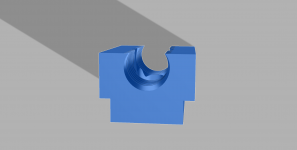 Incra T-Track 6mm Rod Holder 1.png94.1 KB · Views: 255
Incra T-Track 6mm Rod Holder 1.png94.1 KB · Views: 255 -
 IMG_2736.jpg647.1 KB · Views: 248
IMG_2736.jpg647.1 KB · Views: 248 -
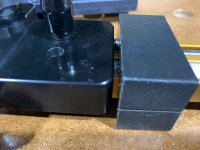 IMG_2735.jpg668.2 KB · Views: 240
IMG_2735.jpg668.2 KB · Views: 240 -
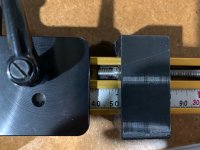 IMG_2734.jpg730.2 KB · Views: 272
IMG_2734.jpg730.2 KB · Views: 272 -
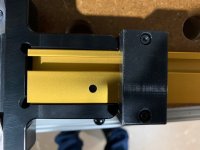 IMG_2733.jpg685.1 KB · Views: 275
IMG_2733.jpg685.1 KB · Views: 275 -
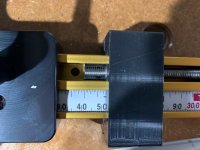 IMG_2732.jpg694.4 KB · Views: 323
IMG_2732.jpg694.4 KB · Views: 323 -
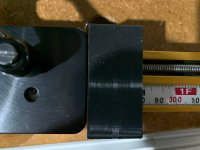 IMG_2730.jpg563.8 KB · Views: 263
IMG_2730.jpg563.8 KB · Views: 263 -
 IMG_2044.jpg180.4 KB · Views: 296
IMG_2044.jpg180.4 KB · Views: 296 -
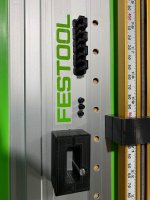 IMG_2043.jpg310.2 KB · Views: 345
IMG_2043.jpg310.2 KB · Views: 345 -
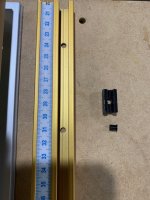 IMG_2045.jpg307.5 KB · Views: 299
IMG_2045.jpg307.5 KB · Views: 299 -
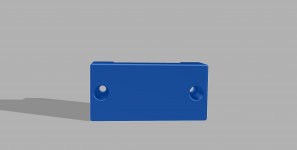 Incra T-Track 6mm Rod End Stop 3.png44.7 KB · Views: 197
Incra T-Track 6mm Rod End Stop 3.png44.7 KB · Views: 197 -
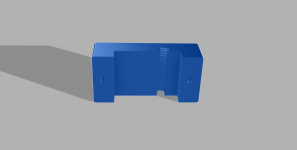 Incra T-Track 6mm Rod End Stop 2.png74.6 KB · Views: 207
Incra T-Track 6mm Rod End Stop 2.png74.6 KB · Views: 207 -
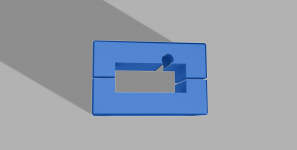 Incra T-Track 6mm Rod End Stop 1.png67.8 KB · Views: 201
Incra T-Track 6mm Rod End Stop 1.png67.8 KB · Views: 201 -
 Incra T-Track 6mm Rod Holder Pegs 1.png54.1 KB · Views: 199
Incra T-Track 6mm Rod Holder Pegs 1.png54.1 KB · Views: 199 -
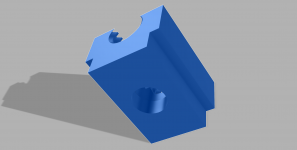 Incra T-Track 6mm Rod Holder 3.png96.6 KB · Views: 202
Incra T-Track 6mm Rod Holder 3.png96.6 KB · Views: 202 -
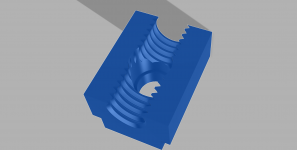 Incra T-Track 6mm Rod Holder 2.png150.8 KB · Views: 206
Incra T-Track 6mm Rod Holder 2.png150.8 KB · Views: 206

